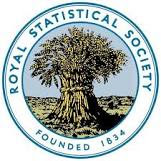For me, the cover image (© Shutterstock) on the UK hardback edition of The Information by James Gleick immediately called to mind the wheat sheaf logo of the Royal Statistical Society.
At the top – the ears of the corn - is a collection of various connector plugs & jacks of the kind with which we are now surrounded. Their cables form the stalks, morphing into a bar code, complete with the numbers along the bottom (the soil). These numbers are, cleverly, those of the book’s ISBN.
The original founders of the Statistical Society were firmly of the belief, in 1834, that their job was to collect & collate the factual information – & leave it to others to thresh out the conclusions to be drawn from this evidence. This belief was emphasised by the addition to the logo of the words Alii Extenderum – To be threshed out by others.
By the time of the Society’s Golden Jubilee those words had been removed & the stalks were bound more tightly together in more orderly fashion. Collection & theory could not be so easily distinguished – how, after all, does one decide which facts to collect?
The great economist Alfred Marshall presented a paper to the Society’s Jubilee meeting in which he argued for the use of graphical presentation of statistics as a method of revealing the causes of historic events – the idea of time series was taking hold. Further, he argued that, in order to arrive at a secure analysis of causes, many graphs would be needed, presented together in a book, or many books.
In what Harro Maas, in his book William Stanley Jevons and the Making of Modern Economics described as what was, for Marshall, an unusual rhetorical flourish, he used an analogy with the Society’s logo: A sheaf with only a few stalks is not very stable; a sheaf with many stalks is securely grounded. He was arguing the need for international comparisons, at a meeting which marked the founding of the International Statistical Institute.
Today we have, if anything, too many stalks at our disposal, thanks to the explosion of information brought about by development of the C20th science of information. The challenge is to find the best ways of binding them together & new methods of revealing & displaying the causes of things.
Links

